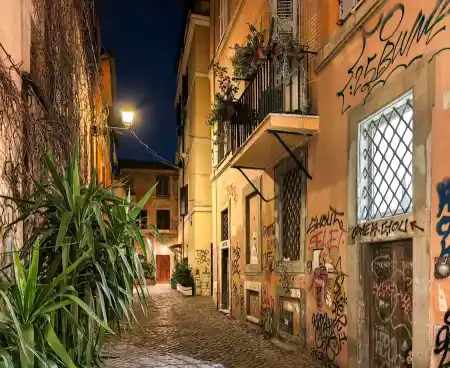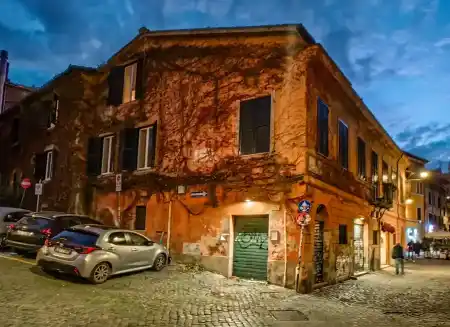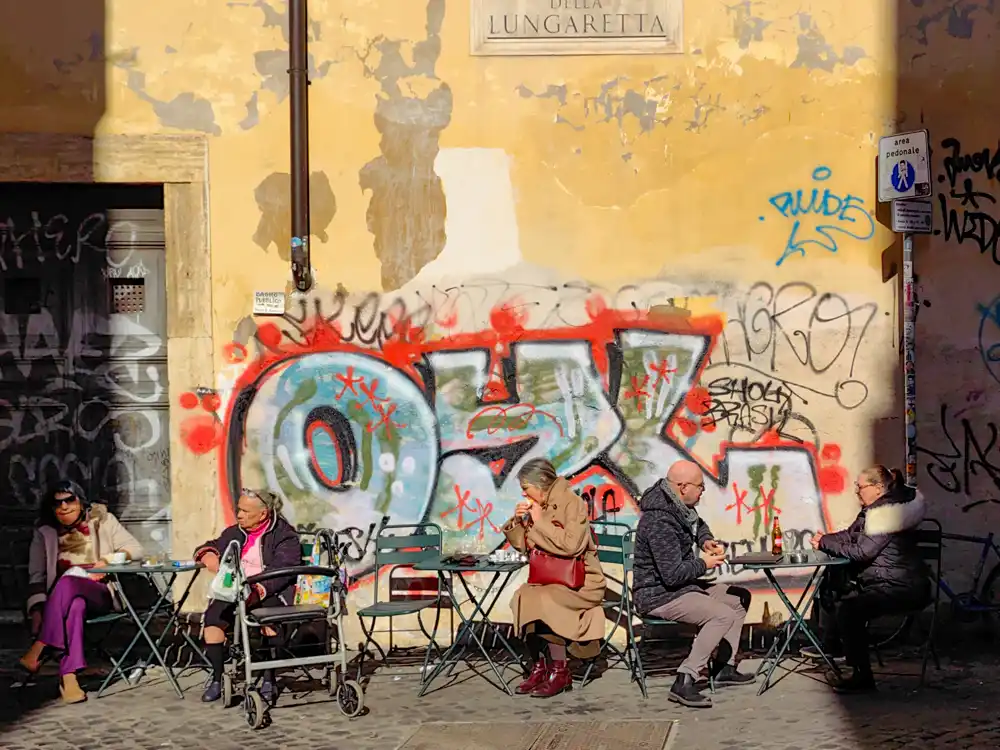Where Rome drops the act and starts dancing. Nightlife in Trastevere begins when Rome strips off its tourist costume. In the morning, this district feels like another world – quiet, sun-drenched, with old ladies hanging laundry above cobbled alleys like victory flags waving against modern monotony.
The stones glisten with history… and with the sweat of passing cyclists. And you? You’re diving into a plate of cacio e pepe – just cheese, pepper, and pasta, but it tastes like an opera duet between God and a Roman grandma.
Evening falls, and the street becomes the stage
By dusk, Trastevere changes tempo. The same streets, now humming with life. Baroque calm gives way to jazzy chaos. Laughter echoes, wine glasses clink, scooters purr by. It’s like Rome finally exhales and says, “Alright, let’s live a little.”
Piazza Santa Maria
The beating heart of Trastevere nights.
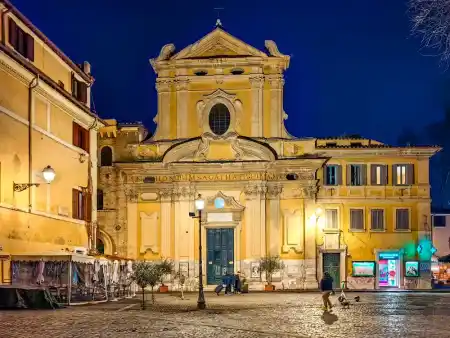
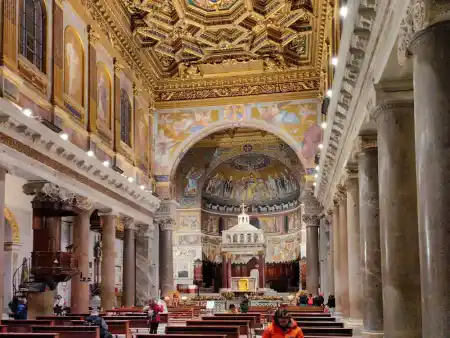

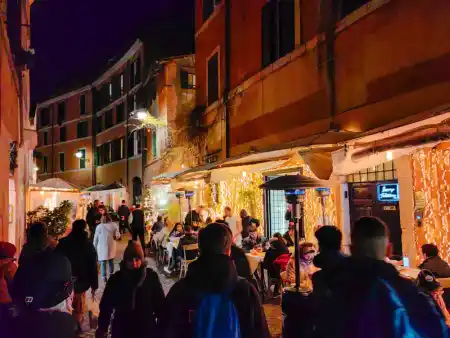
We’re sitting on the church steps, watching the scene unfold. The silence here isn’t really silent – it pulses with guitar strums, the flick of a lighter, the distant sigh of a saxophone from some shadowy alley.
The Santa Maria church has stood here since the 4th century – the first in Rome to officially host a mass, they say. These days, it simply observes as Roman youth dances with life in front of its centuries-old doors.
Graffiti on the walls isn’t crime – it’s expression. The hands that painted them knew heartbreak, joy, and cheap red wine. Trastevere is a gallery without frames. The façades are cracked, sun-scorched, layered like an old love story. Each wall carries a scar and a smile.
Aperol as baptism, chaos as religion
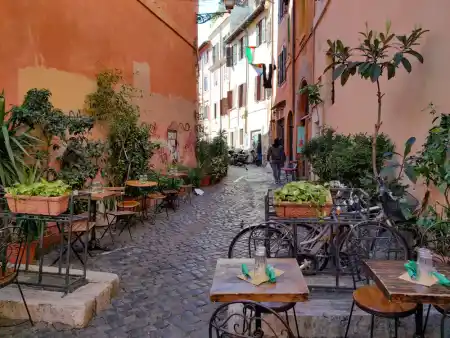
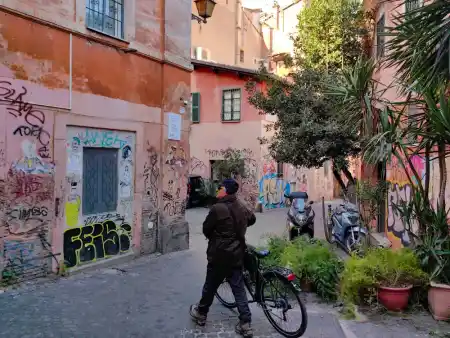
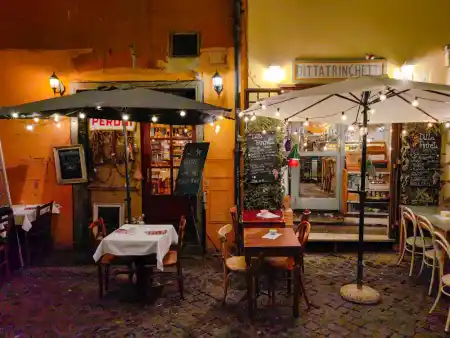
Our friend Johny, a seasoned wanderer, says: “Trastevere was born from alleyway chaos, wild colors, and fermented grapes.” Technically, it began as a working-class fishing district on the far side of the Tiber – trans Tiberim, hence Trastevere. Herbalists, poets, and a few lost Etruscan souls once called it home.
While the rest of Rome tried to be proper and imperial, Trastevere stayed loyal to its crooked charm.
And that’s the spell – contrast. Incense shop next to a vegan café. A punk DJ playing in a repurposed chapel. A Madonna spray-painted with purple hair beneath a flickering lamp that winks like she knows your secret. Thaht is nightlife in Trastevere.
When churches turn into silent witnesses
Nightlife in Trastevere. At night, church doors aren’t closed – they retreat into shadow. Inside: stone columns, flickering candles, echoes. Outside: wine-fueled philosophy and late-night debates. We slipped into one – the silence was so thick, I imagined Dante himself leaning in a dark corner, frowning at anyone daring to whisper.
Then we’re back outside. Two locals argue which spot makes the best cacio e pepe – one swears by Trattoria Da Enzo, the other by a nameless hole-in-the-wall. We say: “Chianti settles all arguments.”



Where the night ends, the legend begins
It’s way past midnight as we walk toward the bridge. But Trastevere isn’t sleeping. Not really. At dawn, it merely changes costumes. Night gives way to a new day, but the heartbeat continues.
Morning dew collects on ancient stones. The alleys echo with yesterday’s laughter. And as we bike through them the next day, we know: next time we’re in Roma, we’re staying right here.
Not because a guidebook told us to. But because this place whispers “live freely” in every crack of its walls.
